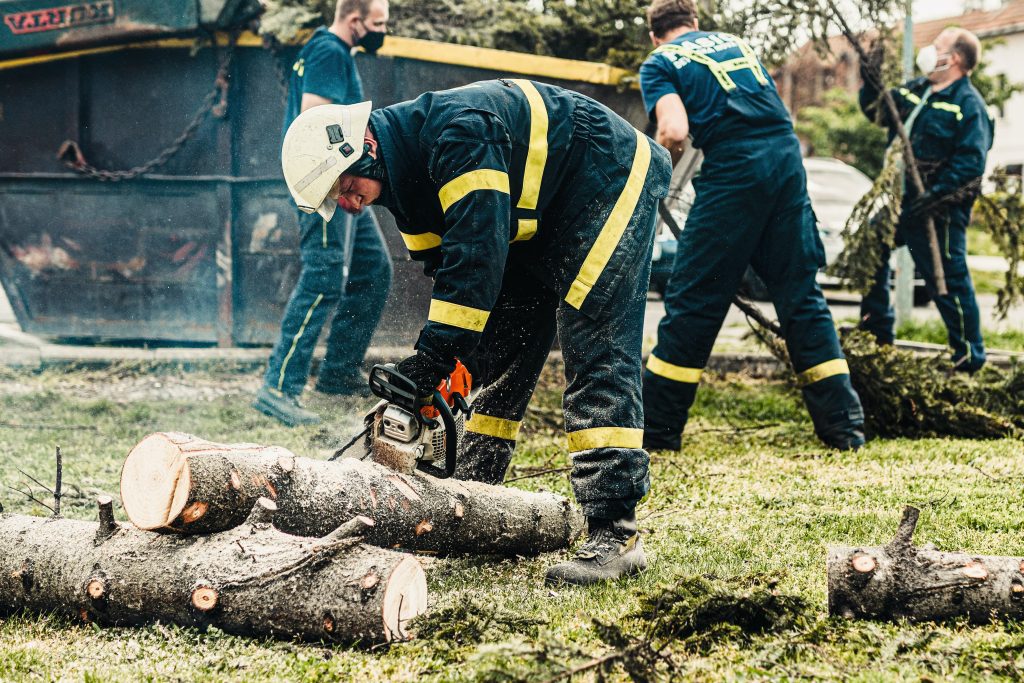Remove Tree Roots From Lawn
Many homeowners feel delight in maintaining a beautiful, healthy lawn. However, one of the most typical difficulties seen in the process is coping with invasive tree roots. These tenacious subsurface structures may wreak havoc on your lawn, producing uneven topography, grass damage, and even jeopardizing the structural integrity of neighboring structures. This artical help us to guide about How to remove tree roots from lawn?
Identifying Tree Root Invasion
- Root invasion can be detected in areas where the soil becomes elevated or uneven.
- Root competition for nutrients and water may cause patches of dying or discolored grass.
- Tree roots may be seen on the surface in some circumstances.
Why Do Tree Roots Need to Be Removed?
- In places where the soil becomes raised or uneven, root invasion can be identified.
- Root competition for nutrients and water may result in dead or discolored patches of grass.
- In certain cases, tree roots can be visible on the ground.
Physically Remove Tree Roots on your own
The first method of removing tree roots is to physically remove the tree trunk and roots. It is frequently the safest but most time-consuming approach of getting rid of the same. To remove the two, you must dig or use a stump grinder. As previously said, the size of the tree roots will determine the amount of time and labor required to remove them. Only when dealing with small stumps and tree roots should you attempt a DIY project.
Dig the roots
You need some tools to get rid of the roots and stump with the following tools:
- Spade
- Grub hoe
- Loppers
- Root saw(very often)
Steps
- Begin carefully digging the soil around the tree roots with a spade or a sharp-edged shovel.
- Continue digging until the roots are exposed and you have a clear view of the root system. Take care not to harm any neighboring plants or structures.
- Begin pulling the loose roots by hand once the roots. Gently pull on the roots until there are no more loose ones.
- Use a grub hoe to remove roots that are tightly buried or difficult to remove by hand.
- Slide the grub hoe beneath the roots and lift them out of the ground with pressure.
- If there are still stubborn roots, particularly tiny ones, you can pluck them by hand.
- To dislodge the roots from the dirt, rock them back and forth. Push the stump in one direction while tugging it in the opposite. A root saw may be required in circumstances where the tree roots are especially thick and resistant.
Using a Stump Grinder to Remove Tree Roots
- Check that the stump grinder is in good operating order. Examine the gasoline, oil, and grinder wheel teeth. Replace or sharpen any dull teeth.
- Remove any trash, rocks, or impediments from around the tree stump to make room for the stump grinder.
- Place the stump grinder right on top of the tree stump. Adjust the grinder wheel’s height so that it is just above the stump.
- Begin by setting the stump grinder as directed by the manufacturer. Start the clutch and gradually lower the grinder wheel onto the stump.
- move the grinder wheel back and forth over the stump. As you grind away the stump, carefully make your way down into the ground.
- Keep the grinder wheel moving steadily to prevent it from digging too deeply in one spot, which can create holes in your lawn.
- After you’ve ground down the stump and roots, you’ll be left with a hole in the ground.
- Backfill the hole with soil and tamp it down to level it with the surrounding lawn.
- Remove any wood chips, debris, or excess soil from the area. Dispose of these materials properly
Removing tree roots by chemicals
Gather the Required Materials:
To get started, you’ll need the following supplies:
- Water hose
- Saw
- Garden sprayer or paintbrush
- Drill: A drill is required to produce holes for chemical application.
- Herbicide: glyphosate herbicide with some ingredient concentration (41% is a decent choice).
- bucket and water.
Steps
- Create hole using drill in the roots you want to treat
- You can make new cuts over the tree stump with a saw.
- You have a tendency to soak the tree’s exterior layer with water. Adding water might assist the herbicide in reaching the tree roots.
- create a solution by combining water and glyphosate pesticide in a 50/50 ratio. Apply water to the outermost layer of the tree stump with a water sprayer. Avoid using the solution on grass or near other plants.
- After using this chemical, you must wait around two weeks for the roots to die fully.
Remove Roots With Rock Salt
- Drill bit that’s 3/8 of an inch in diameter.
- A drill
- Water
- Rock salt
Steps
- Start by drilling a pair of 3-4 inch deep holes in the stump. Also, drill holes in any exposed roots located in the earth.
- You must fill each hold with rock salt and then with enough water to cover the hole without spilling them out and causing damage to adjacent vegetation. Repeat the process a few times more.
- The rock salt will gradually reveal its result, killing it.
Related Posts:
Faqs
What is the simplest way to remove tree roots ?
The best technique to remove tree roots from your lawn is to cut them above ground as near to the ground as possible with a saw or pruning shears.
How long does it take for a tree root to damage a lawn?
Within a few years of planting, tree roots might begin to damage your lawn. The magnitude of the damage, however, is determined by a variety of factors such as tree species, soil type, and proximity to structures.
What will dissolve tree roots?
Chemical solutions like copper sulfate, glyphosate,potassium hydroxide and rock salt can be used to dissolve tree roots effectively. These chemicals are typically poured directly into the sewer line or the area where you want to eliminate the roots. They work by chemically breaking down the roots over time.
What are the common signs of tree root invasion in my lawn?
Look out for raised soil, uneven terrain, and patches of dying or discolored grass as potential indicators of tree root invasion.
Conclusion
To summarize, removing tree roots from your lawn is a task that needs careful evaluation of the strategy that is most suited to your situation. It is critical to emphasize safety and take adequate precautions whether you choose to cut, grind, chemically treat, or allow natural decomposition. Regular progress monitoring is essential, as is patience, as root removal might take time.





